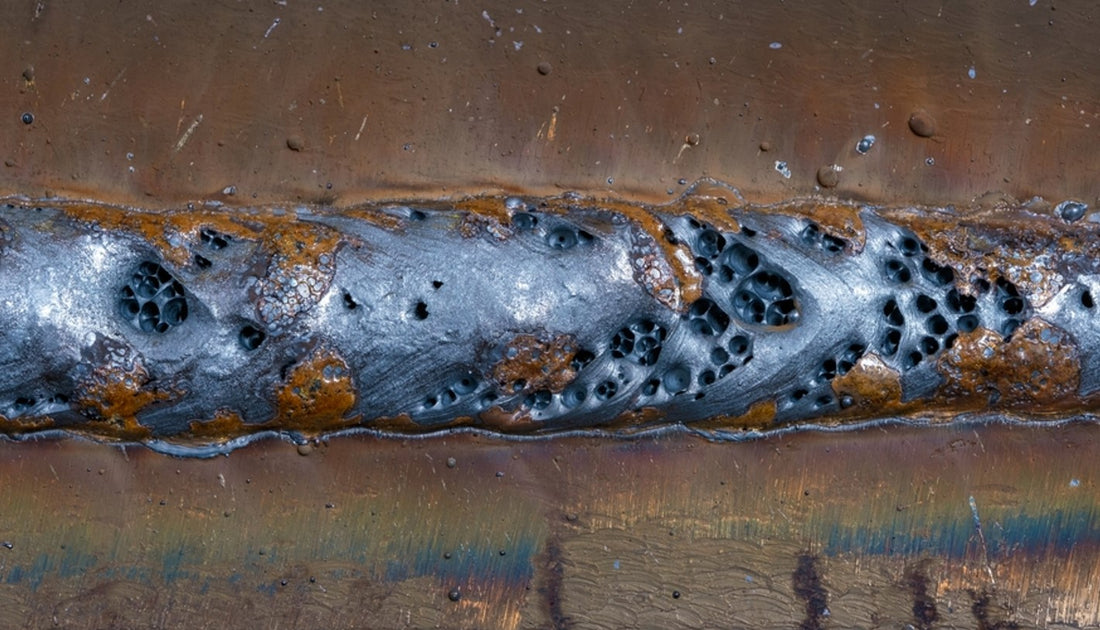What is Porosity in Welding: Recognizing Its Causes and Enhancing Your Abilities
Comprehending Porosity in Welding: Exploring Causes, Effects, and Prevention Techniques
Porosity in welding is a relentless obstacle that can dramatically influence the high quality and stability of welds. As specialists in the welding sector are aware, understanding the causes, impacts, and avoidance strategies associated to porosity is critical for achieving robust and trustworthy welds. By delving into the origin triggers of porosity, examining its damaging results on weld top quality, and checking out effective avoidance techniques, welders can boost their expertise and skills to generate top quality welds continually. The elaborate interplay of aspects contributing to porosity calls for a comprehensive understanding and a proactive technique to guarantee effective welding outcomes.
Usual Reasons of Porosity
Contamination, in the kind of dust, oil, or corrosion on the welding surface, develops gas pockets when heated up, leading to porosity in the weld. Incorrect shielding happens when the shielding gas, frequently used in processes like MIG and TIG welding, is incapable to fully secure the molten weld pool from reacting with the bordering air, resulting in gas entrapment and succeeding porosity. Furthermore, poor gas coverage, usually due to inaccurate circulation rates or nozzle positioning, can leave parts of the weld unsafe, permitting porosity to develop.
Results on Weld Quality
The presence of porosity in a weld can dramatically endanger the total high quality and stability of the bonded joint. Porosity within a weld creates gaps or dental caries that damage the framework, making it more vulnerable to breaking, corrosion, and mechanical failing.
In addition, porosity can hinder the efficiency of non-destructive testing (NDT) strategies, making it testing to find other issues or interruptions within the weld. This can cause significant safety worries, especially in essential applications where the architectural integrity of the bonded elements is critical.

Avoidance Techniques Summary
Offered the damaging effect of porosity on weld top quality, efficient prevention techniques are crucial to keeping the architectural honesty of welded joints. Additionally, picking the proper welding specifications, such as voltage, present, and travel rate, can assist minimize the threat of porosity formation. By integrating these avoidance methods right into welding techniques, the incident of porosity can be considerably lowered, leading to more powerful and more trustworthy welded joints.
Importance of Correct Shielding
Correct securing in welding plays a crucial duty in avoiding climatic contamination and guaranteeing the integrity of bonded joints. Shielding gases, such as argon, helium, or a blend of both, are commonly utilized to protect the weld swimming pool from responding with aspects airborne like oxygen and nitrogen. When these responsive components enter call with the hot weld pool, they can create porosity, resulting in weak welds with minimized mechanical buildings.

Poor securing can result in various defects like porosity, spatter, and oxidation, compromising the architectural honesty of about his the welded joint. Adhering to correct protecting practices is vital to create top quality welds with minimal issues and make sure the durability and dependability of the welded parts.
Tracking and Control Methods
Just how can welders properly check and manage the welding process to make sure optimal outcomes and avoid issues like porosity? One secret approach is with making use of sophisticated monitoring innovations. These can include real-time tracking systems that provide feedback on criteria such as voltage, current, take a trip rate, and gas flow prices. By constantly checking these variables, welders can identify variances from the perfect problems and make prompt modifications to stop porosity formation.

Furthermore, carrying out correct training programs for welders is essential for keeping track of and regulating the welding process successfully. What is Porosity. Enlightening welders on the importance of maintaining consistent specifications, such as correct gas securing and take a trip rate, can assist avoid porosity concerns. Routine evaluations and accreditations can likewise make sure that welders excel in surveillance and regulating welding procedures
Moreover, the use of automated welding systems can enhance surveillance and control capacities. These systems can exactly control welding parameters, reducing the likelihood of human error and guaranteeing consistent weld quality. By incorporating sophisticated tracking modern technologies, training programs, and automated systems, welders can properly keep track of and regulate the welding procedure to reduce porosity defects and accomplish top quality click this site welds.
Verdict
